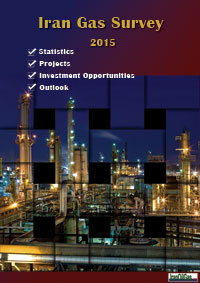 Preface:
Preface:
Over the past years, the circumstances in Iran under sanctions were such that international oil and gas companies have been banned from making any investments in Iran oil and gas industry; in addition, due to lack of financial resources and appropriate equipment, local companies have also been unable to implement major upstream and downstream oil and gas projects.
Upon lifting the sanctions, Iran gas industry is expected to witness significant growth and attract new investments in the short, medium to long term future. The report from IranOilGas Network proves a strong guide for strategy formulation of all the players interested in Iran gas industry.
There are numerous investment opportunities in the upstream sector of Iran gas industry and discovery of new gas reserves in different parts of Iran including northwest of Iran- in Zagros region, and in the Caspian Sea as well as in the Persian Gulf regions. Also, there are about 40 untapped or under-developing gas fields or gas layers- both onshore and offshore- which can be considered a great opportunity for investment of oil companies.
Having started to work as of August 2013, the new administration of the oil ministry of Iran is after applying various methods to attract local and foreign investors as well as major oil companies to get involved in Iran oil and gas projects.
Iran Gas Survey 2015, attempts to provide comprehensive information on current and historical developments in Iran gas reserves, its rich gas production, gas refineries and dehydration plants status, NGL and LNG plants, gas transfer pipelines, gas pressure booster stations, gas consumption and its breakdown as well as gas imports and exports.
In addition, it gives a clear picture on Iran gas industry outlook to 2025 in terms of rich gas production, gas refining and dehydration capacity, gas products and condensate production and the relevant consumptions as well as import and export.
The survey provides detailed information on current and historical gas and gas condensate upstream and downstream projects underway and the development /expansion plans Iran has on agenda for new investments.
The survey identifies the investment opportunities in Iran gas industry upstream and downstream and denotes both its positive and negative aspects as well as the relevant existing challenges.
* Note: Throughout this survey, ‘last year’ means Iranian year started on 21st of March ‘14 and ended on 20th of March 2015.
Table of Contents:
1- Gas Statistics
1-1- Production of Rich Gas
1-1-1- Production of Rich Gas Last Year
1-1-2- Production of Rich Gas in Past 17 Years
1-2- Gas Processing Statistics
1-2-1- Gas Refining Capacity and Production (Present and Past)
1-2-2- Production of Gas By-products at Gas Refineries
1-2-2-1- LPG Production (Present and Past)
1-2-2-2- Sulfur Production (Present and Past)
1-2-2-3- Ethane Production
1-3- Gas Liquids & Condensate Statistics
1-3-1- Gas Liquids and Condensate Reserves
1-3-2- Gas Liquids and Condensate Production (Present and Past)
1-3-3- Condensate Production in Gas Refineries (Present and Past)
1-3-4- Gas Liquids and Condensate Consumption
1-3-5- Gas Liquids and Condensate Exports
1-4- Gas Consumption/ Import & Export Statistics
1-4-1- Gas Consumption (Present and Past)
1-4-1-1- Gas Consumption by Petrochemical Complexes (Present & Past)
1-4-1-2- CNG Consumption (Present and Past)
1-4-2- Gas Import (Present and Past)
1-4-3- Gas Export (Present and Past)
1-4-4- Gas Injection into Oilfields (Present and Past)
1-4-5- Gas Pipelines and Pressure Booster Stations
1-4-6- Gas Transmission
1-5- Gas Figures by 2025
1-5-1- Production of Rich Gas
1-5-2- Gas Outlook by 2025
1-5-3- Iran Gas Refining Capacity Estimation by 2025
1-5-4- Iran NGL Plants Capacity Estimation by 2025
2- Independent Gas Fields
2-1- Active Independent Onshore Gas Fields
2-2- Active Independent Offshore Gas Fields
2-3- Undeveloped/Under-Development Onshore Gas Fields
2-4- Undeveloped/Under-Development Offshore Gas Fields
2-5- Unconventional Gas Reservoirs
2-5-1- Gas Hydrate Reservoirs
2-5-2- Shale Gas
3- Gas Projects
3-1- Upstream Gas Projects
3-1-1- Projects to Develop Independent Gas Fields
3-1-1-1- Projects to Develop Independent Onshore Gas Fields
3-1-1-2- Projects to Develop Independent Offshore Gas Fields
3-2- Downstream Gas Projects
3-2-1- Gas & Condensate Refining Projects
3-2-2- Gas Transmission Projects
3-2-3- Gas Booster Station Projects
3-2-4- Underground Gas Storage Projects
3-2-5- LNG Projects
3-2-6- Gas Gathering & NGL Projects
4- Investment Opportunities and Challenges
4-1- Investment Opportunities in Upstream Gas
4-1-1- Offshore Gas Fields
4-1-2- Onshore Gas Fields
4-2- Investment Opportunities in Downstream Gas
4-2-1- Gas Gathering and NGL Projects
4-2-2- Gas Transmission Projects
4-2-3- Underground Gas Storage Projects
4-2-3-1- Potential Underground Gas Storages
4-2-3-2- Iran’s Potential Underground Gas Reservoirs Map
4-2-4- Gas & Condensate Refining Projects
4-2-5- Gas Gathering and Booster Stations Projects
4-2-6- Privately Run Condensate Refining Projects
4-2-7- GTL Plants
4-2-8- Mini LNG Plants & FLNG
4-2-9- Associated Gas Projects
4-3- Strengths, Weak Points and Challenges
4-3-1- Potentials
4-3-2- Weak Points
5- Managers & Developers of Gas Projects
5-1- Managers of Gas Projects
5-2- Developers Active in Gas Projects over Last Decade
6- Means to Secure Funds of Projects
6-1- Available Means to Secure Funds of Projects
7- Privatization of State Gas Companies
7-1- Privatization of State Gas Companies
8- Appendix
8-1- Existing Gas Refineries Yields
8-2- Existing NGL Plants
8-3- Gas Booster Stations
8-4- Condensate Specifications
8-4-1- South Pars Phase 1 Condensate Specifications
8-4-2- South Pars Phases 2&3 Condensate Specifications
8-4-3- South Pars Phases 4&5 Condensate Specifications
8-4-4- South Pars Phases 6-8 Condensate Specifications
8-4-5- South Pars Phases 9&10 Condensate Specifications
8-4-6- Kangan Condensate Specifications
8-4-7- Ilam Condensate Specifications
8-4-8- Ilam Condensate Specifications
8-4-9- Sarkhoun Condensate Specifications
8-4-10- Parsian Condensate Specifications
8-4-11- Gavarzin Condensate Specifications
8-4-12- Hashemi Nejad (Khangiran) Condensate Specifications
8-5- Iran Petroleum Contract (IPC) Framework
8-5-1- Main Concerns
8-5-2- Main Features of New Model
8-5-3- Number of Model contract
8-5-4- Partnership
8-5-5- Operator take & Government take
8-5-6- Costs
8-5-7- Cost Saving
8-5-8- Cost Recovery
8-5-9- Recovery of NIOC share of costs
8-5-10- Rewards Models (Fees)
8-5-11- Incentives & Revenue Adjustments
8-5-12- Force majeure and Consequences
8-5-13- Settlement of dispute
8-5-14- Flexibilities of New Model